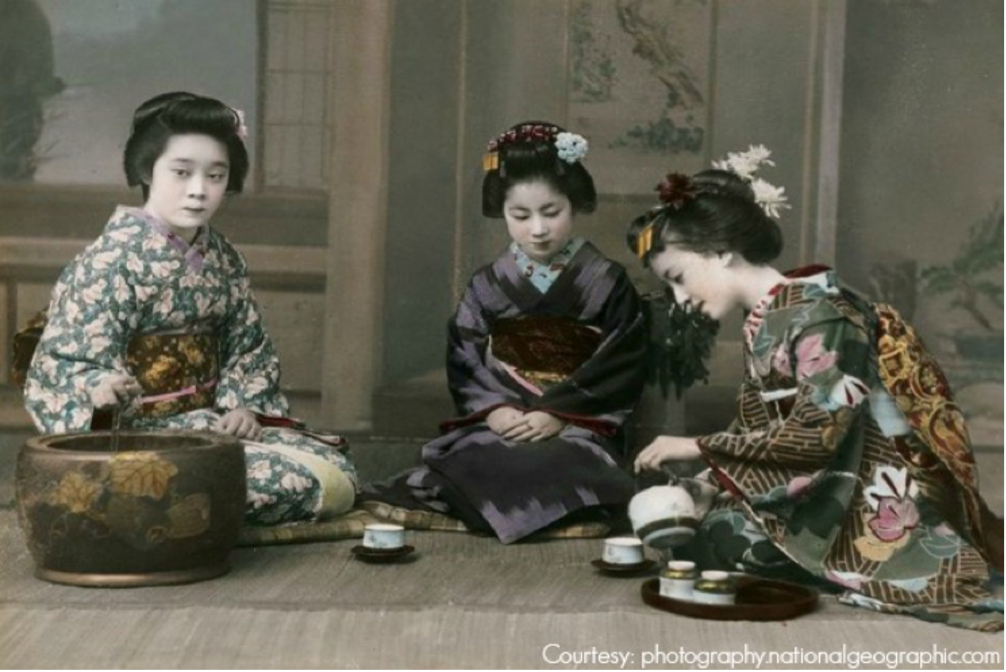“Many paths lead up the mountain, but at the top we all look to the same bright moon.”
Ikkyu
Ikkyu (1394-1481) was a Japanese Zen Buddhist priest and poet. He was also one of the creators of the Japanese tea ceremony.
The Japanese tea ceremony, also called the Way of Tea, is a traditional ritual called Chadō (茶道) in Japanese. It involves the choreographed preparation of matcha (抹茶) tea, green tea powder, for some guests in the Chashitsu (茶室) tea room which is a very quiet environment.

Wabi Sabi (侘寂)
Japanese Wabi Sabi philosophy (one of the nine principles of Japanese art and culture) is described as a “flawed and incomplete” philosophy of beauty.

The pottery used during the tea ceremony changes over time. The color of the glaze transforms and the edges chip. But instead of being seen as imperfection, its history and the uniqueness of this ceramic mug makes it perfect. Japanese tea ceremony masters have admired the cracks on mugs for centuries.
The pottery used during the tea ceremony changes over time. The color of the glaze transforms and the edges chip. But instead of being seen as imperfection, its history and the uniqueness of this ceramic mug makes it perfect. Japanese tea ceremony masters have admired the cracks on mugs for centuries.
Wagashi (和菓子)
This is a traditional Japanese dessert made from bean paste, rice and fruit. The preparation of the dessert has evolved into an art form. These artistic creations are traditionally served during the tea ceremony to balance the bitterness of matcha tea.
They are very delicate, colorful and carved in various shapes and styles.

There are different variations of wagashi depending on the seasons. The way they are shaped is inspired by nature. When served during a tea ceremony, they enhance the sense of the current season.
Chabana (茶花)
It comes from the word flower. It is the simple yet elegant art of flower arrangement. It is an important component of the Japanese Tea Ceremony.
Tea flowers (‘Chabana’) are seasonal flowers arranged in a simple vase. Chabana (tea flowers), are not arranged for decoration, but are an expression of the heart and mind and bring an element of nature into the formal environment of the Chashitsu (tea room).
Chasen (茶筅)
This is the traditional Japanese tea whisk, which is used during the ceremony. It is made of bamboo, to create the perfect tool for the ceremony.
The bamboo whisk whips matcha green tea powder and turns it into a liquid with an emerald green foam.

Mastering the Japanese Tea Ceremony
It takes years to master the Japanese tea ceremony at its best. The skill in mastering the ceremony is not in the preparation of the tea, but in the understanding of the true meaning of the ceremony as well as the correct use of the tea tools.
The heart of the ceremony is aesthetics, predefined movements, and appreciation of the four fundamental elements of the tea ceremony: harmony, respect, purity, and tranquility.

Discover Tea Soul’s selection of Japanese Green Teas and tea ceremony accessories.
If the Japanese tea ceremony has interested you, discover the Chinese Tea Ceremony!



